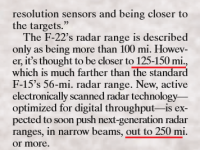I think
@halloweene is very pessimistic, and I don't think he has any recent information to back it up. Also I think he is confusing what I had said about the SPECTRA antennas that were to be GaN already for F3R with the radar for F4.
So I'll give my perspective.
The F4 program is not showing any signs of being behind or narrowing its field. It was planned at launch that F4.1 would be delivered in 2024 and F4.2 in 2025. Then Dassault declared that F4.2 would be delivered in 2024 and it was deduced that F4.1 would be delivered in 2023. As F4.1 is currently being tested, this schedule seems possible with a delivery rather at the end of the year than at the beginning.
The GaN was foreseen in the description of F4. On the other hand, we know that F4.1 avoids complex structural modifications, which means that F4.2 does incorporate such modifications.
So for me, F4.1 will have GaN for the SPECTRA antennas, but the retrofit may not happen on all AAE aircraft. It will be able to handle the main radar antenna, whether it is PESA, AESA or AESA GaN, but again we will probably only have a few antennas. Moreover the delivery of these antennas has no reason to be synchronous with the delivery of F4.1. it could take place at the same time as F4.2.
The major new feature of F4.1 will be the connectivity with a satellite antenna and a new intra-patrol data link that will extend data fusion to the patrol under good conditions. The capabilities associated with this connectivity are the ones that will require the most training for the crews and it's good that we can start them a year ahead of F4.2.
F4.2 will have new wiring, new cooling systems and openings to install new antennas on the aircraft. Some will be installed and managed and others will arrive a bit later without requiring a new standard but only an upgrade like F4.2R or F4.2O4T! As Thales said it might not be quite ready (when Dassault brought forward the date of F4.2) I think that the main Radar antenna will be GaN but that the side antennas will arrive in 2025 as originally planned.












